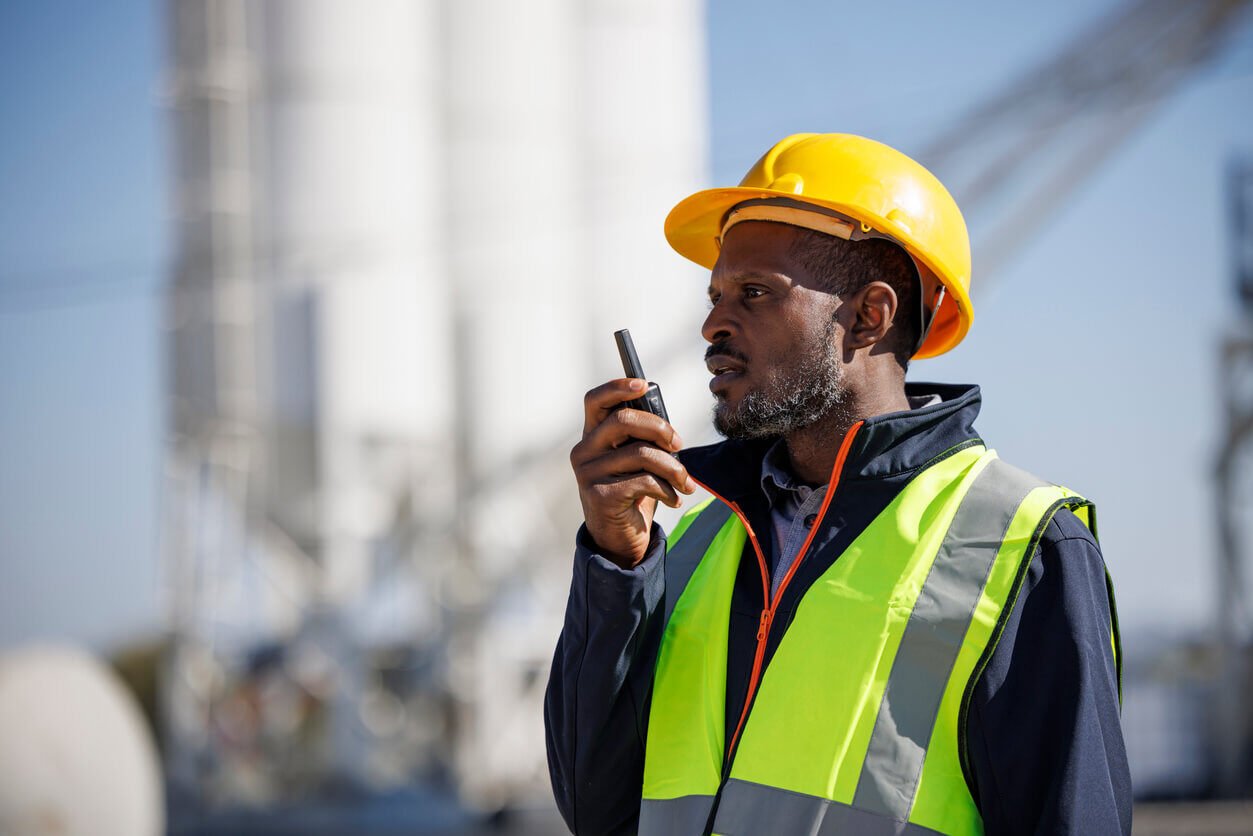5 Benefits of Emergency Notification Systems
- Broad Reach and Accessibility
- Compliance with Safety Regulations
- Customizable Alerts
- Rapid Response Capabilities
- Risk Awareness
The ability to alert many people at once is a significant step forward in safety. Emergency notification systems (or, simply, emergency alerts) have saved countless lives.
When implemented, these programs can send texts, emails, or audio alarms to let everyone know what’s happening. These systems were not only developed to respond to emergencies, but also to mitigate them. If there is a potential risk or danger, anyone potentially impacted can be immediately notified.
How the systems are used depends upon the situation and the risk of danger.
Emergency notification systems are helpful in various industries—particularly those involving dangerous or flammable materials—including oil and gas, chemical manufacturing, and construction. However, regardless of hazard, they’re also crucial in all industries to keep personnel and facilities safe.
Here, we’ll break down the benefits and implementation of emergency notification systems.
How Emergency Notification Systems Can Benefit Your Businesses
You’ve likely experienced at least one emergency notification system, like a weather alert from the National Weather Service. These systems are well-known for saving many lives. For instance, at least 20 people were saved because of alerts when tornadoes touched down in LaSalle Parish, Louisiana in 2019.
While overall safety enhancement is a core benefit of emergency notification systems, there are a range of other advantages.
Broad Reach and Accessibility
Emergency notification systems ensure that everyone knows what is going on regardless of where they are. These systems can connect teams across countries and continents, in cities and countrysides alike. This reach provides many channels to alert affected persons as quickly as possible.
Compliance with Safety Regulations
Even if safety regulations do not currently require them, emergency notification systems are a valuable addition to any emergency response protocol. They help bolster the existing emergency response and reinforce compliance with safety regulations outlined by agencies like OSHA. For instance, these systems can help reinforce evacuation procedures or coordinate emergency communication.
Customizable Alerts
Custom-tailored alerts can be crucial for optimal safety, particularly in more hazardous work environments. Emergency notification system alerts can be highly specific, detailing many scenarios and niche safety protocols, which minimizes confusion in an emergency.
Let’s look at an example.
Emergency Alert: Immediate Action Required
Attention all employees:
There is a gas leak detected at [Location]. All personnel must evacuate the area immediately and proceed to the designated safe zone at [Safe Zone Location]. Emergency response teams have been dispatched.
Do not attempt to shut down equipment or vehicles. Leave all belongings behind. Follow the instructions of emergency personnel.
Rapid Response Capabilities
Immediately relaying important information in an emergency is essential to workplace safety. Emergency notification systems drastically reduce response time by alerting everyone at once – even as updates occur.
Risk Awareness
Emergency notification systems can proactively alert affected persons of a potential scenario before an incident occurs, heightening awareness before an emergency happens. For example, if there is a reported gas leak, an alert could signal crews to attend to it before an explosion or fire occurs.
Emergency Notification System Planning Tips
Since every workplace has wildly different needs, how an emergency alert system is implemented has to be different. But there are some guidelines on shopping for and implementing the right system for you.
Here are some broad tips anyone can consider before adding one to their emergency response plan.
- Alert Variations: Systems have a range of alerts available. You can implement just one or several, depending on the needs or hazards of your workplace. You may also decide to coordinate them with programs like your building’s fire alarm systems.
- Role Assignments: Similar to emergency preparedness, utilizing an emergency notification system also requires assigned roles within the workplace. Specific employees will need access to it to make judgment calls and trigger the alerts when necessary. Assigning these roles and training is essential for the system to work as intended. Such roles can include the primary and secondary message senders who ensure the notifications are sent in a timely manner.
- Scalability: A key to any system addition to your workplace is often the program’s scalability. Knowing you can grow or shrink the emergency notification system as needed may signal that it fits your business well.
- Targeting Abilities: Being able to send notifications to specific groups of people or everyone at once is a crucial differentiation. Not all programs can target messages in extremely small groups.
- Variety of Messaging: As with specific audience targeting, you’ll want a system that allows for as many messages as your business needs. You may need many templated messages for various emergency scenarios depending on your industry. Make sure the system you choose can accommodate this.
After implementing an emergency notification system, remember to do regular workplace-wide testing - usually once per quarter. These tests ensure that the programming will work as intended, avoiding potential mishaps in the future.
Make Good Use of Emergency Notification Systems
A robust emergency notification system is invaluable to any workplace emergency preparedness plan. These programs alert all affected employees both during a crisis and proactively as something unfolds.
Although not required by law, these emergency notification systems save countless lives when implemented. That’s because they reduce response time and minimize confusion during emergent situations. In doing so, people can get to safety faster as well as potentially mitigate an emergency before it happens.
Since these systems rely heavily on understanding environmental risk, working with safety professionals to design and set up a system is vital. Impact Fire experts can come in, examine the situation, and provide guidance for best implementation practices with your unique needs in mind.






